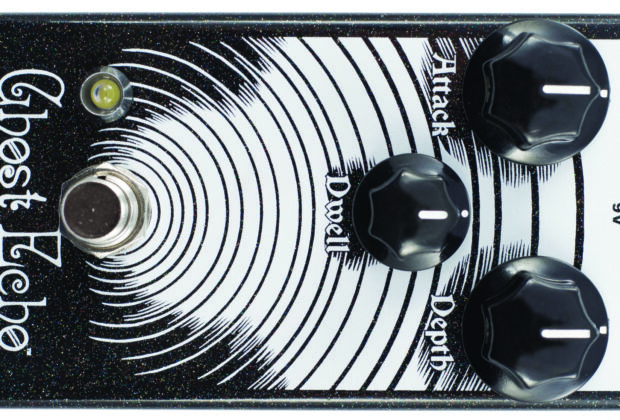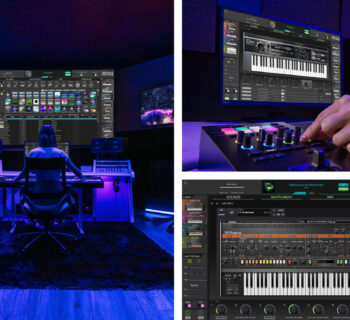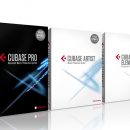In a market flooded with do-it-all reverbs and algorithm-heavy ambient units, EarthQuaker Devices (EQD) continues to refine its niche— offering original design effect pedals that prioritize texture, nuance, and analog feel. The Ghost Echo V3, the latest iteration of one of EQD’s cult-favorite reverbs, doubles down on this ethos. Rather than chase realism or spatial accuracy, it offers an organically voiced reverb engine steeped in vintage flavor and expressive responsiveness.
Sonically, the EQD Ghost Echo V3 is not attempting to model a specific environment or reproduce studio rack fidelity. It’s designed to evoke the splash and sag of vintage spring tanks, early tape delay reflections, and lesser known outboard gear from the pre-digital era. While the core algorithm remains digital from the previous versions, EarthQuaker’s all analog signal path keeps analog warmth and dynamics intact/lost in digital reverb pedals. It’s a pedal that plays more like an instrument than a utility.
The control set remains unchanged from previous versions—Attack, Dwell, and Depth. The EQD Ghost Echo V3 introduces improved op-amps and preamp tuning that result in a warmer tone, increased reverb headroom, and notably quieter performance. The pedal sits better in a mix and enhances rather than conflicts with drive pedals or modulation in your chain. The V3 also benefits from updated relay-based true bypass switching which helps with seamless transitions in live performance.
Unlike a lot of digital reverb pedals that require a lot of time to dial in the desired effect, the EQD Ghost Echo retains its minimal control layout from the previous versions with just three controls: Attack, Dwell, and Depth. Its “what you see set is what you get” control layout makes it a great choice for live performances where menu diving and more sophisticated digital architecture is not so easy to get to in a live performance context.
The Attack control governs pre-delay time, ranging from 30ms to approximately 150ms. This control allows players to define the onset of the reverb relative to the dry signal, from tight, slapback-like transients to delayed ambient swells that bloom behind the note. It’s a deceptively powerful parameter that shapes the Ghost Echo’s core identity. At shorter settings, it mimics the fast reflection response of vintage spring units; at longer settings, it opens up spacious, almost dub-like echo zones.
The Dwell control determines the decay time, dictating how long the reverb persists. Lower settings offer the short tail of a small spring tank or room, while higher values yield increasingly dense and modulated trails. Though not pitched as a shimmer or modulation pedal, the high dwell settings can introduce subtle swirling movement—especially with certain modulation or fuzz units preceding it. Unlike many ambient pedals, however, the Ghost Echo retains its transient definition even at long decay times, making it surprisingly mixable in both live and studio environments.
The Depth control determines the wet/dry balance, and its sweep is musical throughout the entire range. With the control at noon, the effect is subtle, adding just enough spatial bloom to enhance clean phrases without dominating them. Pushing it past 2 o’clock introduces a pronounced ghost-trail that begins to saturate and soften the attack envelope—ideal for ambient textures or atmospheric overdubs.
From a circuit design standpoint, the Ghost Echo V3 has improved dynamic response and lower self-noise than its predecessors. The updated buffer architecture on the Ghost Echo V3 ensures more consistent performance in both front-of-amp and FX loop applications, while the silent relay switching makes it a great choice for studio use. The pedal’s all-analog signal path maintains full-range response and interacts well with both passive and active pickups. It performs particularly well with single-coil instruments, where its reverb trails seem to breathe in sync with your playing dynamics.
In a live context, the Ghost Echo V3 is designed to be pedalboard friendly. When placed early in the signal chain, before overdrive or fuzz, it produces swampy, harmonically rich reflections that are especially effective for roots, Americana, or surf-adjacent styles. The pedal remains articulate and responsive, avoiding the smeared, synthetic quality that plagues many digital reverb units when pushed in front of distortion. When placed in an effects loop, the reverb sits further back in the stereo field, with greater separation between the dry attack and the ambient tail, ideal for players looking for reverb that enhances without overtaking.
In the studio, the Ghost Echo is great to use as a tone-shaping tool across multiple input sources. It works great on guitar but can also add grainy, lo-fi dimension to synths, drums, and vocals. The Ghost Echo’s reverb character is inherently colored and slightly dark, giving it an analog tape aesthetic that’s well-suited to vintage-themed productions. Self-oscillation at high dwell settings creates evolving, unpredictable textures that respond to dynamics and can be manipulated in real time and is particularly effective when paired with a looper or granular delay.
What distinguishes the Ghost Echo V3 from other ambient reverbs is its immediacy and feel. There’s no menu diving, no multi-algorithm switching— just tactile controls that directly affect how the reverb interacts with your playing.
At $199 street, the Ghost Echo V3 is competitively priced and a no brainer addition to your favorite pedal board. In short, EarthQuaker Devices Ghost Echo V3 delivers rich, vibe-laden reverb that invites exploration rather than perfection. A sound choice for studio musicians and producers looking for alternative coloration and a compelling choice to add experimental and ambient textures.
The EarthQuaker Devices Ghost Echo V3 is available now for $199. Find out more at earthquakerdevices.com/ghost-echo














